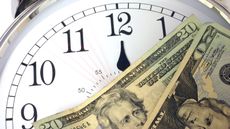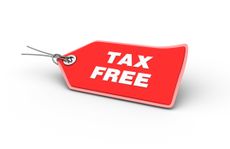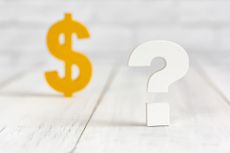Educator Expense Deduction for 2023
Some educators can deduct expenses for classroom supplies when they file their federal returns. Here's how much you can claim.


Studies show that nearly 94% of teachers pay for their own classroom supplies. Last year, teachers planned to spend on average about $864 of their own money to support classroom learning.
With that in mind and since tax season is here, it's good to know the educator expense tax deduction amount for 2023.
Are teacher education expenses tax deductible?
The educator expense tax deduction (also called the teacher deduction) allows some teachers and some counselors, principals, or other instructors, to write off classroom expenses and supplies on federal income tax returns.

Sign up for Kiplinger’s Free E-Newsletters
Profit and prosper with the best of expert advice on investing, taxes, retirement, personal finance and more - straight to your e-mail.
Profit and prosper with the best of expert advice - straight to your e-mail.
So, if you're an educator who has unreimbursed out-of-pocket classroom expenses, you may be able to deduct those expenses on your federal income tax return. Here's what else you need to know.
Educator expense deduction amount 2023
For the current tax season (i.e., the 2023 tax year), the maximum educator expense deduction is $300.
- If you are an eligible educator (more on that later), you can deduct up to $300 of out-of-pocket classroom expenses when you file your 2023 federal income tax return.
- You don’t have to itemize deductions on your return to claim the deduction, meaning you can claim the standard deduction and still benefit from the educator expense deduction.
- If you’re married and file jointly with your spouse, and they are also an eligible educator, you can deduct up to $600 of eligible classroom expenses. But each of you can only claim up to $300.
Does the deduction change each tax year? For nearly twenty years, the annual limit for the educator expense deduction had been $250. But due in part to inflation, the IRS has, in recent years, adjusted the educator expense deduction upward by $50.
Educator expense deduction: Who qualifies?
To be able to write off up to $300 of your unreimbursed out-of-pocket classroom expenses, you need to be an “eligible educator.” For tax purposes, an eligible educator is anyone who is a teacher, instructor, counselor, principal, or aide at a school for kindergarten through twelfth grade.
With the educator expense deduction, it doesn’t matter whether you work in a public school or private school — each environment qualifies. However you must work at least 900 hours during the school year to be able to claim the educator expense deduction.
What qualifies as an educator expense?
There’s a wide variety of "qualified expenses" that educators can claim for the educator expense deduction.
For example, if your school doesn’t reimburse the cost of books, supplies, and other materials that you use in the classroom, the amount that you pay out of pocket for those can be deducted on your federal tax return. The unreimbursed cost of computers, software, and related services are also considered qualified expenses for purposes of the deduction.
You can also deduct the cost of items that you bought to help protect against COVID-19 in the classroom. That might include, for example, masks, disinfectant, hand soap and sanitizer, and disposable gloves. It also can include larger items like air purifiers that were more common during the pandemic.
However, in all cases, other expenses for home schooling or non-athletic supplies for physical education teachers, for example, cannot be deducted. That’s because the IRS doesn't consider those to be qualified expenses.
What about professional development? If you are an eligible educator, you can deduct the unreimbursed costs of professional development courses that are related to what you’re teaching your students at school. However, those courses would still be subject to the $300 deduction limit.
But there are other tax credits that may be helpful if you have significant expenses for continuing education and professional development. For example, the IRS points to the lifetime learning credit, which can help pay for courses that you use to gain or improve job-related skills. That credit can be up to $2,000 if you’re eligible.
For more information about education credits, see Kiplinger's report on education tax credits and deductions.
Educator expenses: Bottom line
In any case, if you need classroom supplies, and like many teachers and educators, pay for those supplies yourself without reimbursement from your school, keep accurate records of what you paid, what you bought, and where and when you bought it.
That documentation might be needed if you’re planning to claim the up to $300 educator expense deduction on your federal return.
Related

As the senior tax editor at Kiplinger.com, Kelley R. Taylor simplifies federal and state tax information, news, and developments to help empower readers. Kelley has over two decades of experience advising on and covering education, law, finance, and tax as a corporate attorney and business journalist.
-
 The Clock Is Ticking on Tax Cuts: Act Now to Avoid Missing Out
The Clock Is Ticking on Tax Cuts: Act Now to Avoid Missing OutEstate and gift tax exemptions are at an all-time high until the end of 2025. That may seem like a long way off, but setting things up could take longer than expected.
By Christopher F. Tate, J.D. Published
-
 Should an ESOP Be Your Only Retirement Account?
Should an ESOP Be Your Only Retirement Account?When it comes to saving for retirement, diversification is critical. Consider building your nest egg with a combination of accounts in addition to an ESOP.
By Peter Newman, CFA Published
-
 Types of Income the IRS Doesn't Tax
Types of Income the IRS Doesn't TaxIncome Tax It may feel like the IRS taxes most of your hard-earned money, but some types of income are nontaxable.
By Kelley R. Taylor Last updated
-
 Why You’ll Still Pay Oklahoma Grocery Tax
Why You’ll Still Pay Oklahoma Grocery TaxState Tax Oklahoma is eliminating state grocery taxes, but that doesn’t mean groceries will be tax-free.
By Katelyn Washington Last updated
-
 Last-Minute Tax Savings Guide for 2023
Last-Minute Tax Savings Guide for 2023Tax Savings April 15 is weeks away, so it's not too late to save your 2023 taxes.
By Sandra Block Published
-
 Why You Should Care About Your 2026 Taxes Now
Why You Should Care About Your 2026 Taxes NowTax Planning It's not to early to prepare for the possibility that your taxes will go up in 2026.
By Sandra Block Published
-
 Capital Gains Tax Exclusion for Homeowners: What to Know
Capital Gains Tax Exclusion for Homeowners: What to KnowTax Breaks The IRS capital gains home sale exclusion can be a valuable tax-saving tool if you’re eligible.
By Kelley R. Taylor Last updated
-
 Save During Alabama’s Severe Weather Preparedness Tax Holiday
Save During Alabama’s Severe Weather Preparedness Tax HolidaySales Tax Holiday Certain items will be tax-free during the Alabama severe weather preparedness sales tax holiday this year, but there are specific rules to follow.
By Katelyn Washington Last updated
-
 Will Your IRS Refund Be Less This Year?
Will Your IRS Refund Be Less This Year?Tax Refunds Data show federal tax refunds are lower this year than last. Will you get less money back from the IRS this tax season?
By Katelyn Washington Last updated
-
 Four Things You Need to Know About Presidents Day and the IRS
Four Things You Need to Know About Presidents Day and the IRSTax Season The weeks surrounding Presidents Day are a particularly busy tax time for the IRS.
By Kelley R. Taylor Last updated









